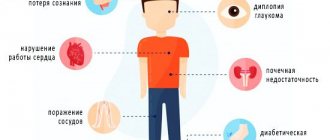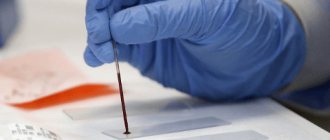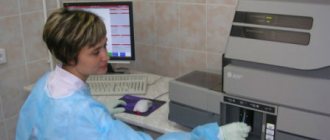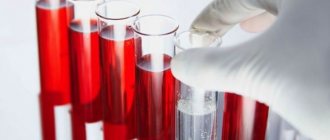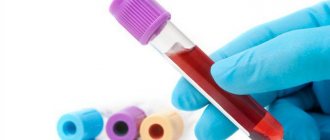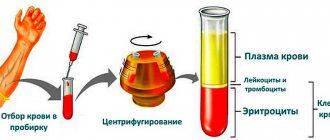Diabetes insipidus is a violation of water-salt balance, occurring either due to insufficient production of the hormone vasopressin (antidiuretic), or due to kidney disease, in which the tubules become insensitive to this hormone. The disease also has another name – diabetes. This condition is completely consistent with the clinical picture. With this disease, a person produces an abnormally large amount of urine, which causes dehydration and the patient experiences constant thirst. This is a rare disease, which currently most often occurs as complications of neurosurgical operations and certainly requires contact with an endocrinologist.
At CELT you can consult an endocrinologist.
- Initial consultation – 3,500
- Repeated consultation – 2,300
Make an appointment
Causes of diabetes
The reasons are divided into the following groups:
- central;
- renal;
- autoimmune.
Causes of a central nature are most often tumors or diseases that destroy the brain structures (hypothalamus, pituitary gland) in which antidiuretic hormone is synthesized. In addition to tumors, a syphilitic, malarial or tuberculous process can have a destructive effect when the lesions are located in the hypothalamus or pituitary gland. The normal functioning of these parts is disrupted by traumatic brain injury or brain surgery. Sometimes diabetes develops after meningoencephalitis.
Renal forms of diabetes can be congenital or acquired. They are caused by kidney diseases - renal failure, amyloidosis, infections, overdose of lithium drugs, excess calcium in the blood (hypercalcemia). Congenital is a slow loss of vision accompanied by diabetes or Wolfram syndrome (this syndrome also includes diabetes mellitus and deafness, but not all components may appear).
Autoimmune causes of the disease involve the formation of antibodies to cells that produce ADH, while its concentration in the blood decreases.
Pregnancy can also provoke diabetes, however, in this case the disease is temporary. It develops more often in women with kidney problems. Some time after childbirth, health usually returns to normal.
Mechanism of action of ADH
The main physiological effect of vasopressin is to stimulate the reabsorption of water in the collecting ducts of the renal cortex and medulla against the osmotic pressure gradient [6]. In renal tubular cells, ADH acts through V2 baroreceptors (type 2 vasopressin receptors), which are located on the basolateral membranes of collecting tubule cells. The interaction of ADH with V2 receptors leads to the activation of protein kinase A, which stimulates the incorporation of water channel proteins, in particular aquaporin-2, into the apical membrane of cells, which ensures the transport of water from the lumen of the collecting ducts into the cell, and then through water channel proteins located on the basolateral membrane channels (aquaporin-3 and aquaporin-4) water is transported into the intercellular space and then into the blood vessels. As a result, concentrated urine is released. With normal ADH secretion, urine osmolarity is always above 300 mOsm/L, and can even increase to 1200 mOsm/L and higher. With ADH deficiency, urine osmolarity is below 200 mOsm/L [4, 5].
Classification
In accordance with the etiology, central and renal forms of the disease are distinguished. In this case, the central one is divided into 2 more groups:
- idiopathic or due to an unknown cause;
- symptomatic, developing after another illness.
The idiopathic form is a congenital decrease in the amount of hormone produced. There is no way to influence this process, and it is also impossible to recover.
The course of the symptomatic form is more favorable; after the cessation of the underlying disease, diabetes may also cease. Such cases happen quite often.
Symptoms
There are two main symptoms of diabetes insipidus:
- polyuria or excessive urine output;
- polydipsia or unquenchable thirst.
These symptoms are mandatory, and all others are optional.
Normally, an adult excretes no more than 3 liters of urine per day. The amount can be reduced in unfavorable conditions (heat, lack of water, fever), this is a normal adaptive reaction, while the concentration of salts and specific gravity also increase proportionally. An increase in the amount of daily urine is always a manifestation of the disease.
A person with diabetes insipidus can excrete from 4 to 20 or even 30 liters of urine per day. The less antidiuretic hormone is produced, the more severe the disease, the more urine is released. The urine of sick people does not have a characteristic straw color or smell, and the salt concentration is low. Its specific gravity (relative density or amount of dissolved salts and urea) is also low, no more than 1003 (the normal specific gravity of urine in adults is from 1012 to 1025).
Normally, water is absorbed back from primary urine in the kidney tubules, but with diabetes this does not happen; the entire amount is excreted. Constant urges interfere with work, rest and life in general. Due to constant trips to the toilet, a person does not get enough sleep, becomes irritable, absent-minded, hot-tempered, and unbalanced. Thirst torments a sick person constantly; the amount of liquid drunk is approximately equal to the amount of urine excreted.
In children, the onset of the disease is sometimes manifested by enuresis (bedwetting), which should be a reason for examination.
Despite the huge amount of fluid absorbed, a person suffers from dehydration. Little saliva, tears and sweat are produced, the skin is dry, hair and nails are brittle. Blood pressure is almost always low due to a decrease in circulating blood volume. Appetite decreases, vomiting and headache occur. In advanced cases, pituitary insufficiency develops, when the production of all other pituitary hormones suffers, which entails multiple organ disorders.
Sexual function suffers: in women the menstrual cycle is disrupted, in men - potency.
If a person does not receive treatment or does not replenish the amount of lost fluid, then dehydration ends in blood thickening and collapse with all the ensuing negative consequences.
Consequences and complications
The chronic course of the disease and constant intake of large amounts of fluid leads to:
- dehydration of the body, causing weakness, tachycardia , hypotension , collapse , disturbance of the rheological properties of blood;
- an increase in the volume of the stomach and its prolapse;
- changes in the secretion of gastric juice and bile formation;
- the addition of clinical manifestations of gastrointestinal dysfunction, including decreased salivation, belching, epigastric pain, the development of hypoanacidic gastritis , constipation and colitis , biliary dyskinesia ;
- expansion of the ureter, ureters and renal pelvis;
- frequent headaches , insomnia , convulsions , psychomotor agitation, as well as decreased mental and mental abilities.
Diagnosis of the disease
Diagnosis begins with a study of the properties of urine: daily amount, relative density and osmolarity, which is used to judge the concentration function of the kidneys. Other necessary studies, without which a complete diagnosis is impossible:
- blood potassium and calcium levels;
- fasting blood glucose;
- blood ADH;
- Ultrasound and kidneys;
- kidney biopsy (if indicated);
- fundus examination;
- MRI of the brain.
Your doctor may order other tests if any organ failure is suspected. It is advisable to conduct a psychoneurological examination in children, since their congenital disorders are often combined with pathology in this area.
To clarify the diagnosis, dry eating may be prescribed for 10 or 12 hours. If a person is sick, then during this time body weight can decrease by 5% due to fluid loss.
Treatment of diabetes insipidus
Treatment depends on the form and cause of the disease. Symptomatic diabetes is treated by treating the underlying cause - removing the tumor, targeting syphilis, malaria or tuberculosis.
In order to facilitate the functioning of the kidneys, a diet containing a minimum of animal protein is prescribed. Instead, food should contain a lot of carbohydrates and fats. You need cereals, vegetables and fruits, dairy products, natural juices and fruit drinks. Food is prepared without salt, salt is added at the table, and no more than 5 g (teaspoon) of table salt is allowed per day. It is better to drink not water, but natural compotes or juices.
During treatment, a synthetic analogue of the antidiuretic hormone, Desmopressin, is prescribed. The medicine is available in the form of tablets and nasal spray. Treatment begins with drops in the nose, selects the desired dose, and then switches to tablets. The dosage is selected individually; the daily amount can be divided into 2 doses. There is no addiction; complete destruction of the drug occurs in the intestines. The medicine is prescribed only after a comprehensive examination; there are contraindications.
According to indications, drugs that indirectly stimulate the production of natural ADH may be prescribed: Chlorpropamide, Carbamazepine and others.
To reduce the amount of urine excreted, products containing sulfonamide groups can be used. The diuretic Hydrochlorothiazide works especially well. The medicine reduces the reabsorption of sodium and instead removes bicarbonates and phosphates. Does not change the acid-base state. Enhances the excretion of magnesium and urates, retains calcium in the body. All this leads to the fact that the amount of urine excreted in patients with diabetes insipidus decreases, and its concentration increases.
Clinical examples
Patient M. 40 years old. At the age of 17, she began to feel thirsty and drank 8 liters of water per day. She first turned to doctors in 2009, when the volume of fluid consumed exceeded 12 liters, and general weakness and fatigue began to increase. The diagnosis of diabetes insipidus was made on the basis of complaints; in a urine analysis according to Zimnitsky, the volume of daily urine was 8550 ml, the relative density of urine was 1002–1005 g/l. The patient was prescribed the drug Presaynex at a dose of 10 mcg 2 times a day. At a follow-up visit a month later, the patient noted an improvement in her health, and the volume of fluid consumed decreased to 2500 ml. In the control urine analysis according to Zimnitsky, the volume of daily urine is 2350 ml, the relative density is 1006–1018 g/l. Further dose titration was not carried out due to the achieved therapeutic effect of the drug. During observation, the patient developed acute respiratory viral infections, accompanied by swelling of the nasal mucosa. Sublingual administration of the drug at a dose of 30 mcg per day was sufficient to eliminate the symptoms of polyuria and polydipsia. Patient M., 19 years old. The diagnosis of diabetes insipidus was established at the age of 14 after removal of a penial germinoma and a course of chemoradiotherapy. I took Minirin 0.1 mg, 1 tablet 3 times a day. While taking the drug, he noted abdominal pain. According to the results of the examination, while taking Minirin 0.3 mg/day, daily diuresis was 3 liters, the relative density of urine was 1003–1008 g/l. Since May 2010, he has been switched to intranasal administration of desmopressin. The dose of Presaynex was 10 mcg 2 times a day. While taking the drug, abdominal pain does not bother me. During the control urine analysis according to Zimnitsky, diuresis was 2200 ml/day, the relative density of urine in individual portions was 1012–1015 g/l. No further dose titration was performed.
Patient G., 56 years old. The first signs of the disease in the form of thirst, polydipsia and polyuria up to 5 liters per day were observed from the age of 4–5 years. An examination at the age of 6 revealed diabetes insipidus. The patient's father also had polyuria and polydipsia, but he was never examined or treated. Subsequently, during examination, he was also diagnosed with diabetes insipidus and treatment with chlorpropamide 0.5 g per day was prescribed. Patient G.'s daughter had thirst and polyuria from an early age, and after examination she was diagnosed with diabetes insipidus. Treatment with desmopressin (Adiuretin) led to normalization of diuresis and relative density of urine. Currently, patient G. has been switched to Presaynex 10 mcg 2 times a day from previously taking Minirin 0.2 mg 2 times a day. The patient was transferred to intranasal desmopressin due to inconvenience when taking Minirin. This was due to 30-40 minute intervals between drug intake and food intake, as well as 2-hour intervals between food intake and drug intake, which made it difficult for the patient to work with frequent business trips. While taking the drug Presaynex 20 mcg/day, diuresis is 2300 ml, relative density of urine is 1006–1014 g/l.
Forecast
Diabetes insipidus does not pose a threat to life, since replacement therapy with Desmopressin can be used throughout your life. With proper treatment, the ability to work does not even suffer. The exception is the renal form in children, since the basis is an anatomical defect.
CELT doctors are ready to help any day, providing the patient with a full life. If you or your loved ones are faced with such a disease, make an appointment with a CELT endocrinologist.
Make an appointment through the application or by calling +7 +7 We work every day:
- Monday—Friday: 8.00—20.00
- Saturday: 8.00–18.00
- Sunday is a day off
The nearest metro and MCC stations to the clinic:
- Highway of Enthusiasts or Perovo
- Partisan
- Enthusiast Highway
Driving directions
Experience in managing patients with CND
Patients with CND are under observation at the Endocrinological Dispensary of the Moscow Department of Health. 67 patients were transferred from the tablet form of desmopressin to the intranasal spray: 42 women and 26 men aged from 20 to 82 years.
During the translation, it was taken into account that taking 0.2 mg of the tablet form of desmopressin is equivalent to 10 μg of desmopressin administered intranasally.
In the vast majority of patients, the dose of oral desmopressin ranged from 0.2 to 0.6 mg/day (Fig. 1). When switching to intranasal spray, the average therapeutic doses of desmopressin ranged from 10 to 30 mcg/day. In patients receiving tableted desmopressin at a dose of 1.0 to 1.8 g per day, the dosage frequency was 8 times; when switching to the intranasal form of the drug, disease compensation was achieved at a dose of 60 to 80 mcg/day with a dosage frequency of 2 times in a day. The dosage range of intranasal desmopressin is presented in Fig. 2. No significant side effects were noted while taking the intranasal form of the drug.

